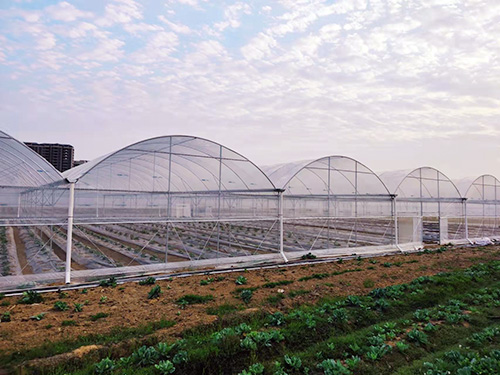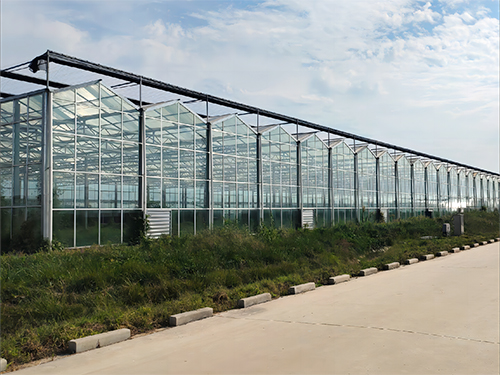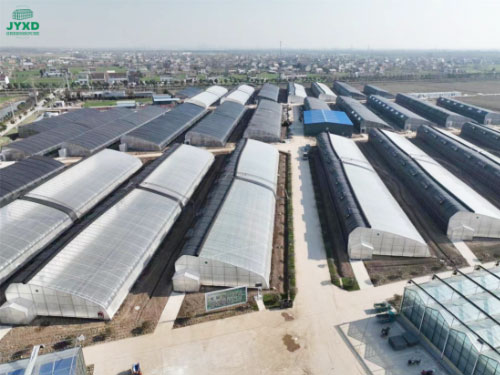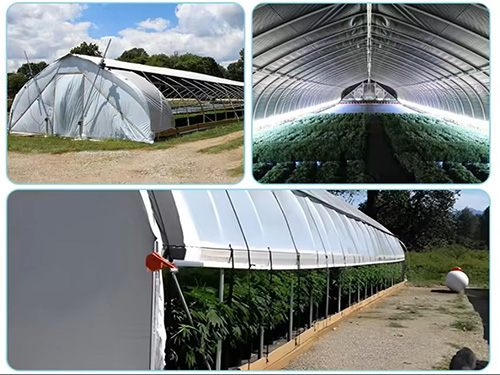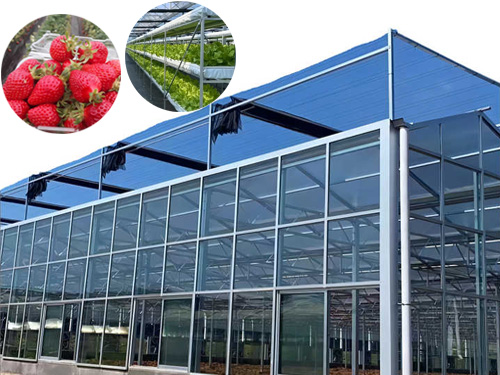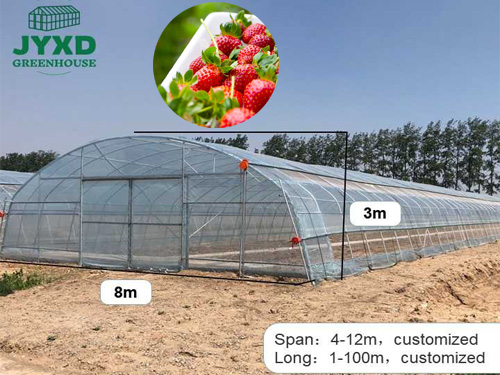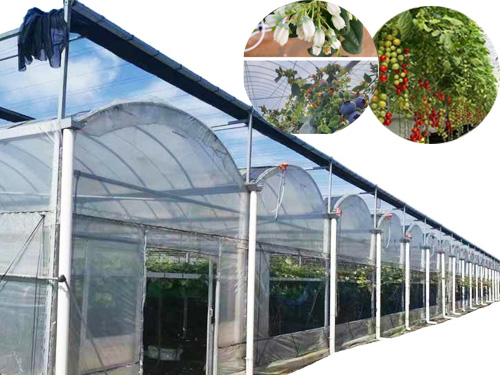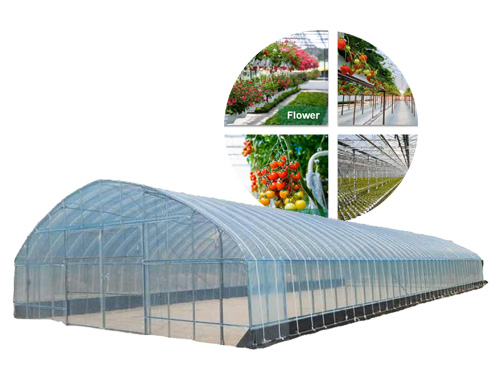NEWS DETAILS
NEWS INFORMATION
Commercial Greenhouses: How to Increase Economic Efficiency and Market Competitiveness
AUTHOR:jyxd-greenhouse DATE:2024-12-29 04:42:10 HITS:72
Commercial greenhouses play an increasingly important role in modern agriculture. They help growers achieve high productivity and efficiency through efficient resource use and advanced technology. However, in a fiercely competitive market environment, enhancing the economic efficiency and market competitiveness of commercial greenhouses has become a central concern for every grower. This article will explore strategies to optimize commercial greenhouses and help you stand out in the market.
Sources of Economic Efficiency in Commercial Greenhouses
1. High Yield
Through refined management and environmental control, commercial greenhouses can achieve maximum output in limited spaces.
2. Improved Quality
The controlled growing environment in greenhouses allows crops to grow healthier and meet market standards, resulting in higher market prices.
3. Diversified Planting
Greenhouses can grow a variety of high-value crops, such as rare vegetables, fruits, and medicinal plants, increasing revenue diversity.
Strategies to Increase Economic Efficiency in Commercial Greenhouses
1. Introduce Advanced Greenhouse Technology
· Smart Environmental Control Systems
Sensors monitor temperature, humidity, light, and other data in real-time, automatically adjusting the greenhouse environment to ensure crops always grow in optimal conditions.
· Automated Irrigation and Fertilization Systems
Precise water and fertilizer delivery reduce resource waste while increasing crop yield and quality.
· Carbon Dioxide Supplementation Technology
Increasing carbon dioxide levels in the greenhouse enhances photosynthesis efficiency and boosts yield.
2. Choose High-Value Crops
· Rare Varieties: Crops like organic vegetables, strawberries, and medicinal plants have stable market demand and higher prices.
· Seasonal Crops: Grow common crops during off-season periods to meet peak market demand.
· Export-Oriented Crops: Select products with international market demand, such as specialty fruits, vegetables, or ornamental plants.
3. Optimize Resource Utilization
· Energy-Saving Design
Install double-layer glass, insulation films, and other equipment to reduce energy consumption and lower heating and cooling costs.
· Rainwater Collection and Reuse
Greenhouse roof rainwater collection systems significantly reduce irrigation costs while being environmentally efficient.
· Energy Diversification
Introduce clean energy sources, such as solar and geothermal energy, to reduce reliance on traditional energy sources.
4. Enhance Operational Efficiency
· Optimize Planting Cycles
Plan planting times and crop rotation schedules to avoid idle resources and increase planting efficiency.
· Train Employees
Provide training on agricultural techniques and equipment operation to minimize operational errors and boost production efficiency.
· Data-Driven Decision-Making
Use big data to analyze market demand and production efficiency, creating precise planting plans.
Strategies to Enhance Market Competitiveness
1. Branding and Marketing
· Differentiation: Create unique market value for greenhouse products, such as "High-Quality Organic Vegetables" or "Tech-Savvy Smart Greenhouse Products," attracting specific consumer groups.
· Product Traceability: Provide detailed records of the planting process for each batch of products, building consumer trust.
· Packaging and Promotion: Design professional packaging and brand stories to stand out in supermarkets and online marketplaces.
2. Expand Sales Channels
· Direct-to-Consumer Sales: Use community-supported agriculture (CSA) or farmers' markets to sell directly to consumers, reducing intermediaries.
· E-commerce Platforms: Use online sales channels to expand market coverage while offering convenient delivery services.
· Wholesale Markets: Establish long-term partnerships with large supermarkets, restaurants, or processing factories to ensure stable sales channels.
3. Focus on Sustainability
Modern consumers prefer to support environmentally friendly and sustainable products.
· Organic Certification: Obtain organic farming certifications to add extra value to products.
· Reduce Carbon Footprint: Promote the use of clean energy and water-saving technologies in greenhouse operations, attracting eco-conscious consumers.
4. Market Research and Positioning
· Consumer Demand Analysis: Use surveys, market research, or online data analysis to identify specific consumer needs.
· Competitor Analysis: Study competitors' strengths and weaknesses, finding market gaps for differentiation and competitive positioning.
Long-Term Planning for Commercial Greenhouses
1. Technological Upgrades
Continuously introduce new technologies, such as AI-assisted planting or blockchain traceability, to inject competitiveness into greenhouse operations.
2. Expand Scale
Gradually expand the greenhouse area or increase planting varieties based on existing successful experiences, enhancing overall capacity.
3. Processing and Value-Added Services
Transform greenhouse products into processed goods, such as jams, dried fruits, or high-end ingredients, further increasing product value.
4. Education and Experiential Services
Open the greenhouse as an educational base or tourist attraction, allowing consumers to visit, experience, and generate additional income.
Conclusion
The success of commercial greenhouses depends on scientific management and market-oriented strategies. By optimizing greenhouse technology, selecting high-value crops, expanding sales channels, and establishing a strong brand image, growers can significantly increase economic efficiency and secure a competitive edge in the market. If you are seeking a customized commercial greenhouse solution or optimization advice, please don’t hesitate to contact us. We offer comprehensive technical support and services to help you achieve your economic and environmental goals!
Hebei Juyou Xinda Greenhouse Facilities Co.,Ltd.
Copyright © 2024-2025 https://www.jyxd-greenhouse.com. All Rights Reserved Hebei Juyou Xinda Greenhouse Facilities Co.,Ltd.Copyright





 Current Location:
Current Location: